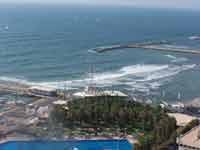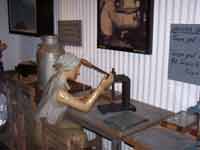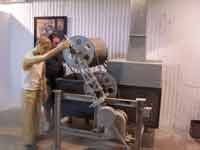Israel Day 9 - Tel Aviv
|
|
||
 |
|
 |
 |
|
 |
|
The Ayalon Institute
Imagine building a clandestine ammunition factory, right under the nose of the British. In 1945,
the Haganah determined that at the end of the British Mandate a struggle
would ensue between the Jews and Arabs of the land. A decision was made
by the Haganah to establish a secret plant. In just three weeks,
preparations for the factory were completed and it was code named the
Ayalon Institute, a military industry factory in the early pre-state
days. The necessary manufacturing machines were lowered into the factory through an opening, which was concealed by a huge 10-ton baking oven (there was a working bakery here). The entrance stairs, used by workers to get to and from the factory was covered by a large washing machine that revolved on a pivot (see photo). The ‘kibbutz members’ also operated a commercial laundry. It is perhaps ironic that British officials stationed in nearby Rehovot used to bring their uniforms to be laundered in a place that concealed the clandestine arms factory. When you tour the institute, you can actually go down the stairs and see the manufacturing area. Visits require a reservation, as you can only visit as part of a tour (just be sure to mention that you want an English tour when you call). There is also an audiovisual program, in English. There is an interesting story about how copper, the raw material that was needed, was obtained. Applications for import licenses were submitted to the authorities. When asked why so much copper was needed the explanation was given that it would be used to make lipstick cases. The explanation seemed plausible and the import licenses were approved. There is no doubt that the efforts of the Haganah members who worked here under harsh conditions played a crucial role in the success of the War of Independence; David Ben Gurion termed their efforts as heroic. The institute is situated on Kibbutzim Hill, which got its name from the groups of pioneers that trained here, from 1932-1942. These people would later go on to establish kibbutzim through out the country and came to this place to gain experience in the ways of daily life on a kibbutz. |
||

